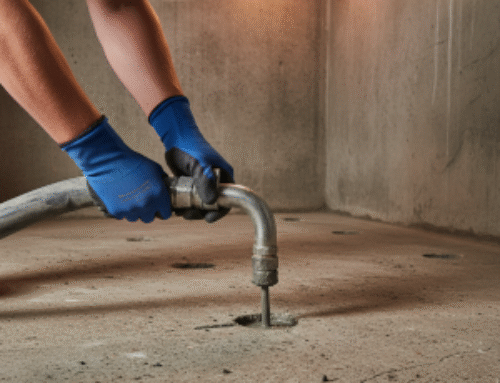Imagine walking up to your home and noticing a growing gap between your front porch and the house. At first, it might seem like a small cosmetic issue — just another quirk of an aging home.
But in reality, a porch pulling away can signal much bigger problems: soil erosion, poor drainage, or even foundation settlement. Left unchecked, it can create tripping hazards, invite water into your home, and put unnecessary stress on your foundation.
The good news?
With the right repairs, you can stabilize your porch, protect your home, and prevent future separation.
Why Is My Front Porch Pulling Away from the House?
Several factors can cause your porch to shift or separate over time.
The most common include:
Soil Settlement
Over time, the soil beneath your porch can shrink, shift, or wash away. This is especially common in areas with clay-heavy soil, which expands when wet and contracts when dry. As the ground moves, the porch loses support and begins to sink or tilt away from the house.
Poor Drainage
Water is one of the biggest enemies of concrete. If your gutters, downspouts, or yard grading send rainwater toward your porch, it can erode the soil underneath. The more water that flows under the porch, the weaker the support becomes — eventually leading to visible separation.
Foundation Movement
Your house and porch don’t always settle at the same rate. If the main foundation moves differently than the porch slab, a gap will start to form.
Construction Methods
In many homes, porches are not structurally tied into the main house foundation — they’re often “free-standing” slabs. While this can make them easier to build, it also means they are more likely to shift independently, leaving gaps and cracks behind.
In most cases, it’s not just one issue but a combination. For example, poor drainage causes soil erosion, which then accelerates settlement and separation.
That’s why a professional inspection is so important: it pinpoints the exact cause and ensures repairs actually solve the problem.
Signs Your Porch Separation Is a Serious Problem
Not every small gap is an emergency, but certain warning signs mean you should act quickly:
Visible Gaps Between Porch and House Walls
A hairline crack might not mean much, but if you can slip a coin between the porch and the siding, that’s a red flag. The wider the gap, the more likely it is that the soil or foundation underneath has shifted.
Uneven or Sloping Porch Surface
If your porch feels like it’s tilting or you notice one side sinking lower than the other, it’s a clear sign the slab is losing support underneath. This can create tripping hazards and put stress on connected steps and railings.
Cracks in the Porch Slab or Steps
Concrete naturally develops small surface cracks, but larger or widening cracks — especially those running from the house toward the edge of the porch — often point to ongoing settlement or structural movement.
Water Pooling Around the Gap
After rain, if you notice puddles forming where the porch meets the house, it means water is seeping into the gap. This can accelerate soil erosion and increase the risk of water damage to your foundation.
Doors or Windows Near the Porch Sticking or Misaligned
Separation isn’t always isolated to the porch. If nearby doors and windows are suddenly difficult to open or close, it may indicate that the foundation itself is shifting, putting stress on the structure of your home.
Potential Risks of Ignoring Porch Separation
Trip Hazards
Uneven steps, tilted slabs, or widening gaps can easily cause slips and falls, especially for children, elderly family members, or visitors. What starts as a small inconvenience could quickly turn into a safety liability.
Water Damage
Gaps between the porch and your house create a pathway for rainwater to seep in. Over time, this can damage siding, erode the soil around your foundation, and even allow moisture to penetrate your basement or crawl space.
Foundation Stress
When the porch and house move independently, the connection points — like where steps meet the house — can put added strain on the foundation. This extra stress can cause structural instability.
Pest Intrusion
Insects, rodents, and other pests love small openings. A gap under or beside your porch is an open invitation for termites, ants, or mice to enter and nest, creating an even bigger problem for your home.
Costlier Repairs
A small separation may be fixable with straightforward solutions like polyurethane foam injection (polyjacking). But if the issue is ignored, it could escalate to major foundation repairs, porch reconstruction, or water remediation — all of which cost significantly more.
Repair Solutions for a Porch Pulling Away
1. Polyurethane Foam Injection (Polyjacking)
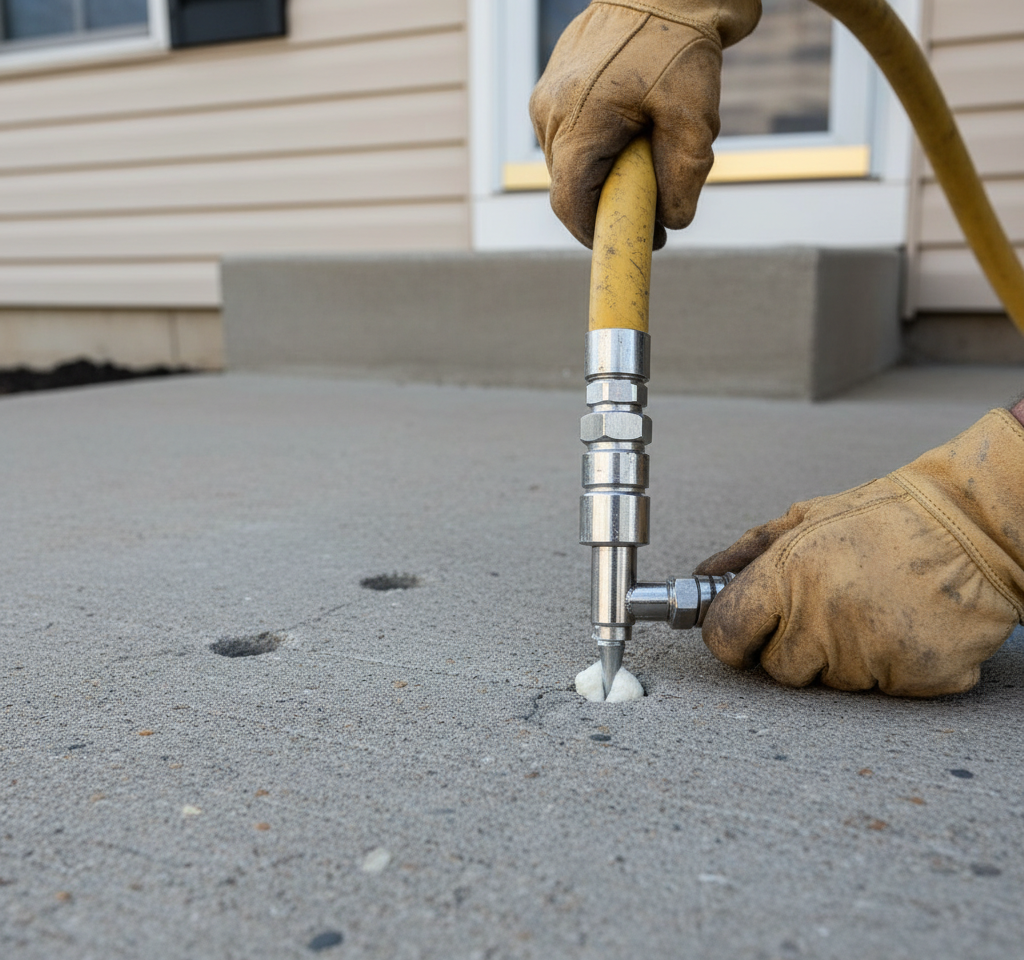
This modern method involves drilling small holes into the porch slab and injecting a lightweight, expanding polyurethane foam underneath. The foam fills voids, compacts loose soil, and gently lifts the porch back into place.
2. Mudjacking
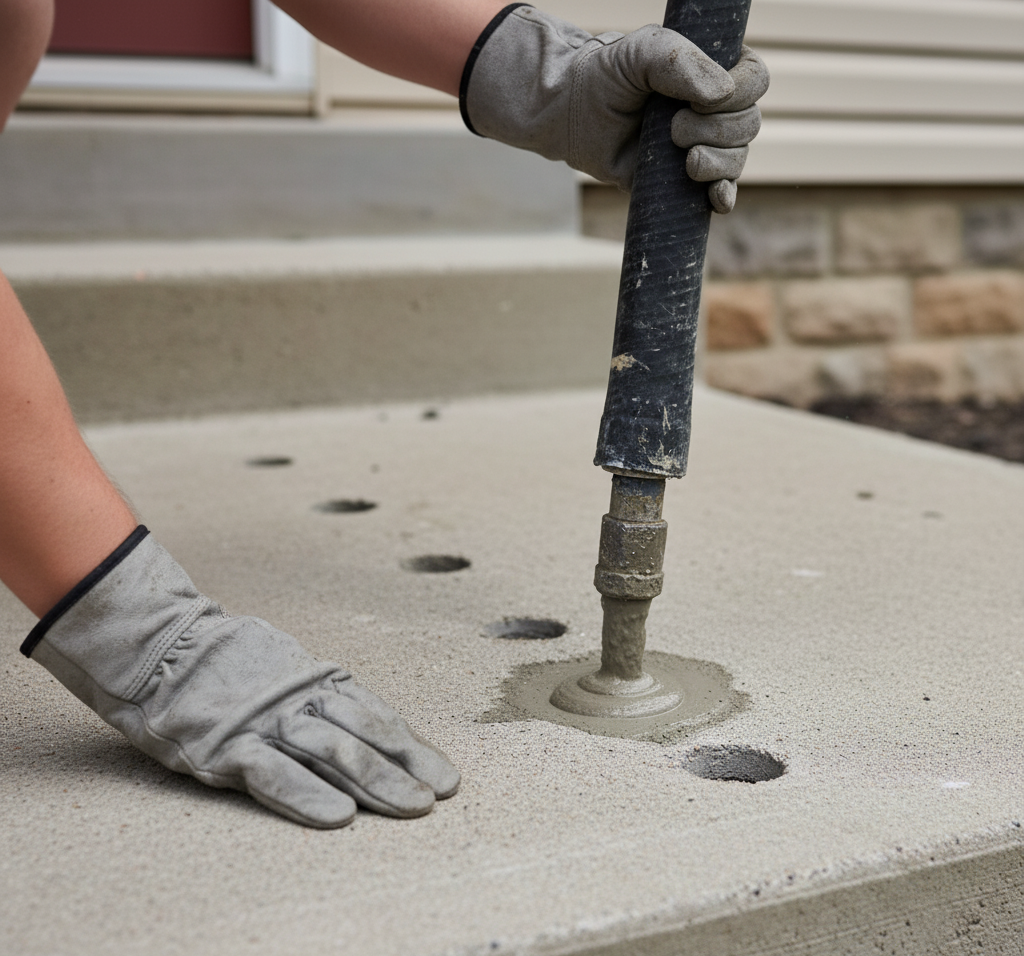
Similar to polyjacking, mudjacking uses a cement-based slurry instead of foam. The material is pumped under the slab to raise it back into position. While mudjacking is more affordable upfront, it is heavier than foam and may settle again over time, making it less durable in the long run.
3. Helical Piers or Push Piers
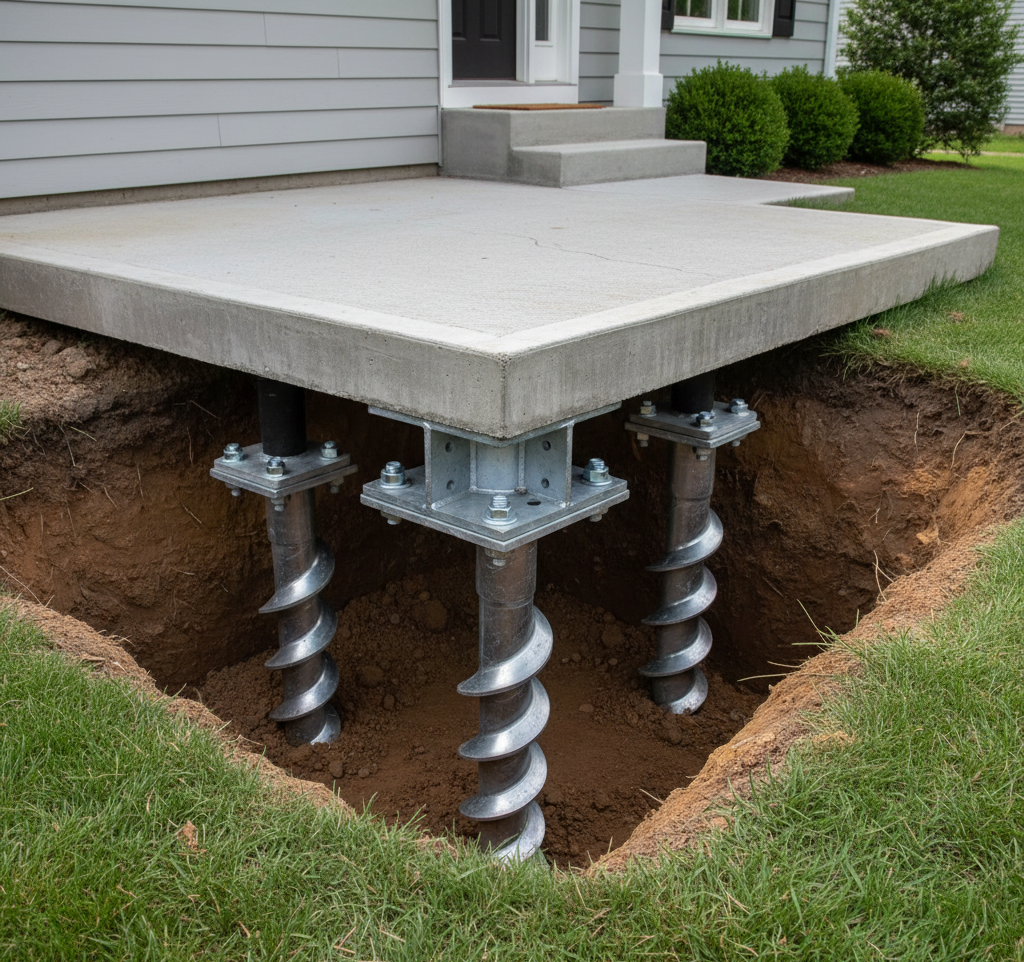
If your porch has more serious settlement issues, piers may be the best option. These steel supports are driven deep into stable soil or bedrock and attached to the porch foundation, preventing further sinking.
Helical piers are screwed into the ground like giant screws, while push piers are hydraulically pushed into place. Both provide permanent stabilization.
4. Drainage Correction
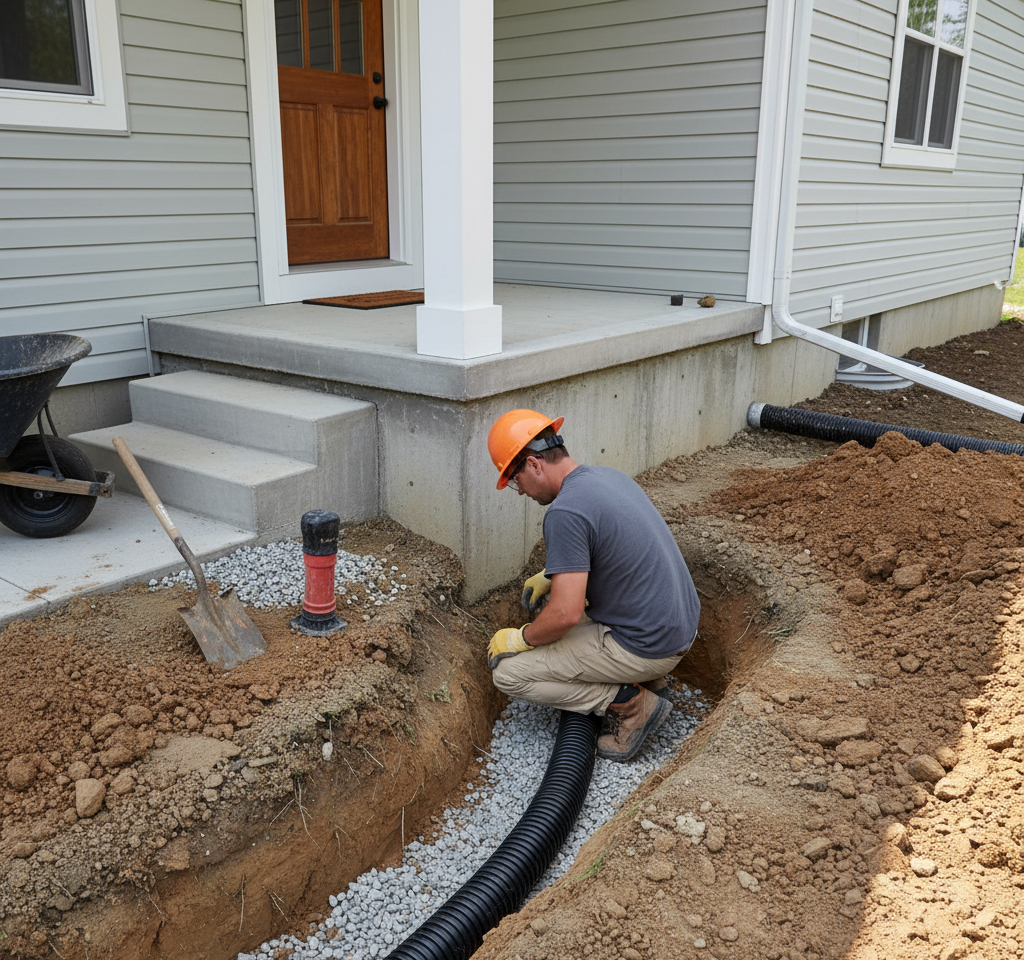
Since poor drainage is one of the top causes of porch separation, fixing the water flow around your home is often part of the solution. This could include regrading soil so it slopes away from the house, extending downspouts, or installing French drains to carry water safely away from the foundation.
5. Crawl Space/Foundation Reinforcement
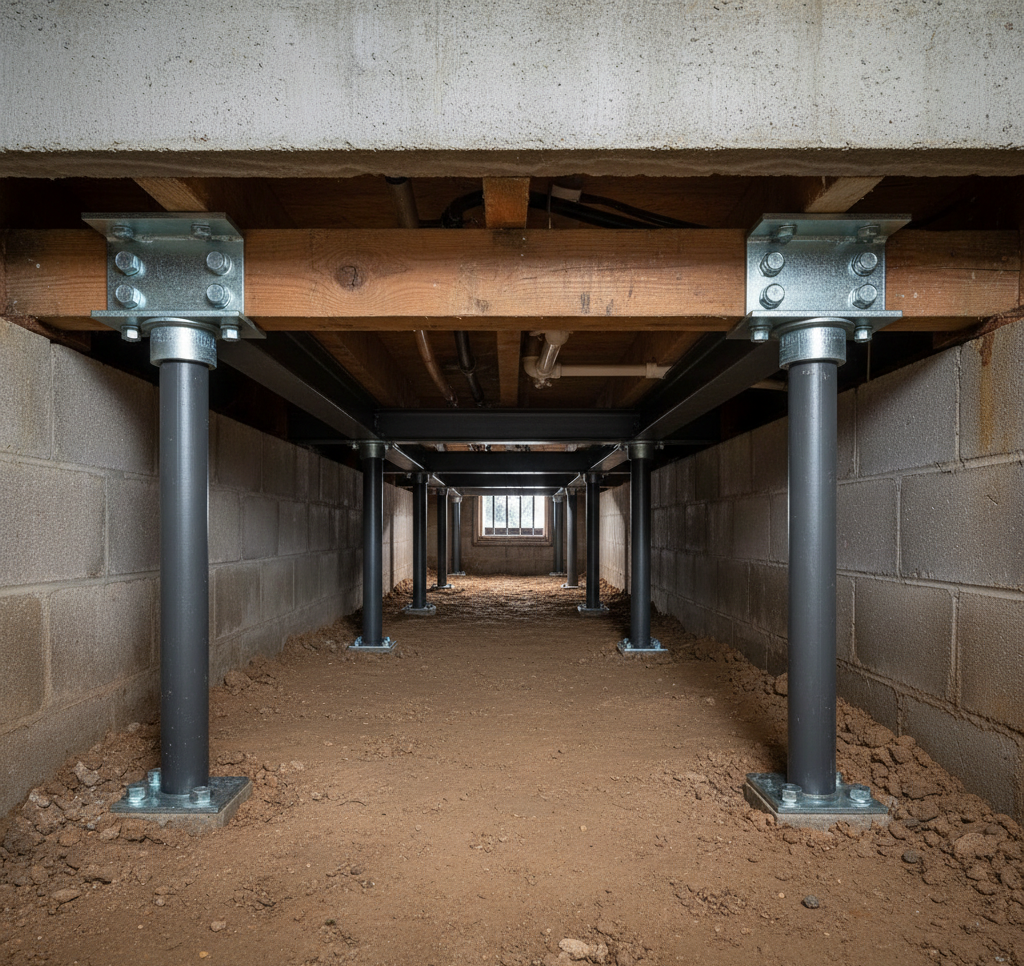
In some cases, porch movement is tied to larger foundation issues. If your crawl space or main foundation is shifting, reinforcing it with piers, beams, or other structural supports may be necessary to protect both the house and the porch.
Each repair option comes with different costs and benefits, which is why a professional inspection is key. A foundation specialist can recommend the right solution based on the extent of the damage and the soil conditions around your home.
Frequently Asked Questions
Don’t Ignore a Pulling Porch
A concrete porch pulling away may look minor, but it can be a warning sign of deeper foundation problems. Acting early not only protects your home but also saves you money in the long run.
If you’re in Kentucky and notice your porch separating, call Bluegrass Foundation Repair. Our team can inspect, repair, and reinforce your porch and foundation so you can enjoy peace of mind — and a safer, stronger home.
Call us today to schedule an inspection.

